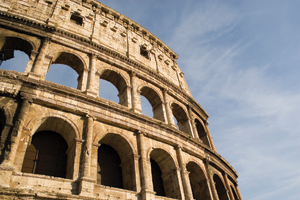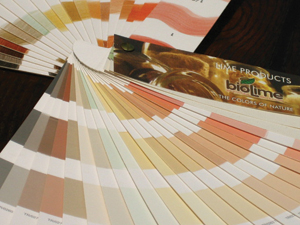BY WILLIAM JANHONEN, LEED AP, NAHB-CGP
What’s old is new again. Technology is not always about gadgets and equipment. In the case of building material, one of the newest products being used in sustainable building is also one of the oldest.
 According to experts, lime has been sheltering man for at least 7,500 years, and perhaps even longer.
According to experts, lime has been sheltering man for at least 7,500 years, and perhaps even longer.
Limestone caves dating back 16,000 years in Lascaux, France are frescoed with natural iron oxide pigments applied onto damp cave walls of high calcium content. The Egyptians used lime to plaster the pyramids at Giza about 6,000 years ago. Lime was used extensively throughout the Roman Empire and can be seen in some remaining structures, including the Parthenon. Vitruvius, in his famous book, “Da architectura,” states that a structure must have three qualities of firmitas, utilitas and venustas that it must be strong or durable, useful and beautiful. One entire chapter is dedicated to praising lime.
Fast forward to today and we see the development of artificial cements in the early 19th century. Builders, in their desire to build faster and stronger, achieved these hydraulic properties from lime and birthed what we know today as Portland cement. Portland cement reversed old methods of using only pure lime. As building demands got faster and faster, society is now paying the price, as many structures made of non-permeable cements are failing before our eyes. Sadly, our faster, get-it-done-time-is-money approach didn’t produce overall sustainable structures.
bioLime Bio-ecological Finishing Solutions is a four-generation company with humble origins in southern Italy. Today, with their offices in Bend, Oregon and Miami, Florida they have brought the old world to the new world. They bring the knowledge of how a purely natural material can bring so many benefits to create a truly sustainable structure, a phrase often misused in our country. When you compare lime paint or plaster to any other material, the benefits are astounding.
The bioLime product allows you to build “breathable” wall systems, eliminating standing condensation because lime allows moisture to evaporate. Lime as a substance resists and prevents bacteria, mold and mildew from forming within the building structure. Lime is mold-resistant and a natural biocide because of its high pH (between 12-12.5), which also allows it to reduce indoor air pollutants, making the walls hygienically sound and easy to clean. bioLime as a product is exceptionally durable. The Parthenon, the classic temple in Rome, spans over 140 feet and still stands after 1,900 years. bioLime is a natural fire retardant and has a very low thermal conductivity, which allows people to stay warmer in cold climates and cooler in hot climates. Lime is unaffected by UV-rays and will not trap the sun’s heat, crack, fade or lose color.
 One of the coolest attributes of correctly formulated lime structures is that lime is self-healing. The small movements subject to all buildings cause large cracks in stiff cement-bound structures. In lime structures, the small movements are more likely to create crazing or fine fissures or cracks. When water penetrates into these fissures it can dissolve “free” lime and bring it to the surface. When the water evaporates, the lime self-fuses – it heals itself. If you have ever been to Tuscany you will see the proof, as many old lime structures on non-stable foundations distort with age but do not fall.
One of the coolest attributes of correctly formulated lime structures is that lime is self-healing. The small movements subject to all buildings cause large cracks in stiff cement-bound structures. In lime structures, the small movements are more likely to create crazing or fine fissures or cracks. When water penetrates into these fissures it can dissolve “free” lime and bring it to the surface. When the water evaporates, the lime self-fuses – it heals itself. If you have ever been to Tuscany you will see the proof, as many old lime structures on non-stable foundations distort with age but do not fall.
I was introduced to lime as a young boy watching my father create “Venetian Plaster” walls in beautiful colors and patterns. Artisans have used lime for centuries because of its beautiful luminescence and its enhancement of comfort, tranquility and connection with the Earth. When you look at all of the tremendous benefits of using this purely natural substance to create truly sustainable structures you can understand why its time has come, again.





